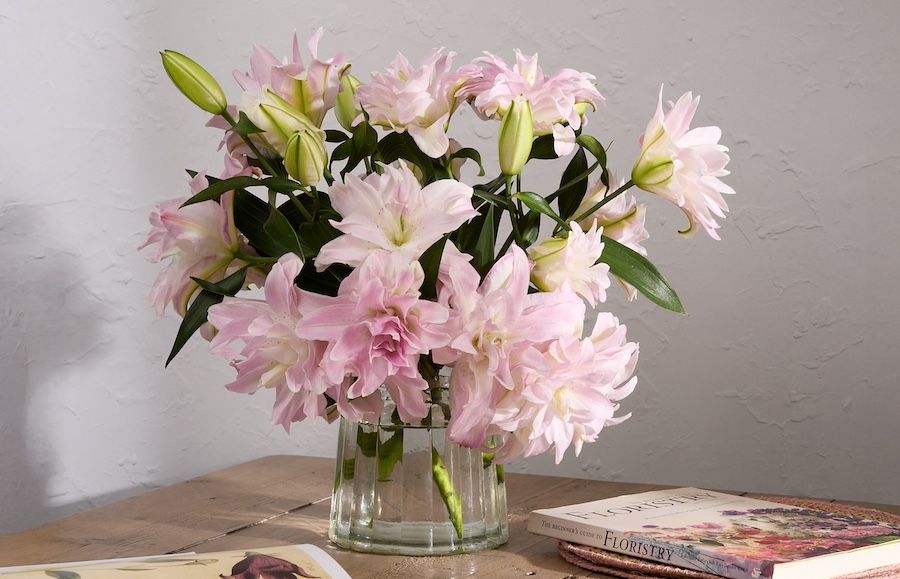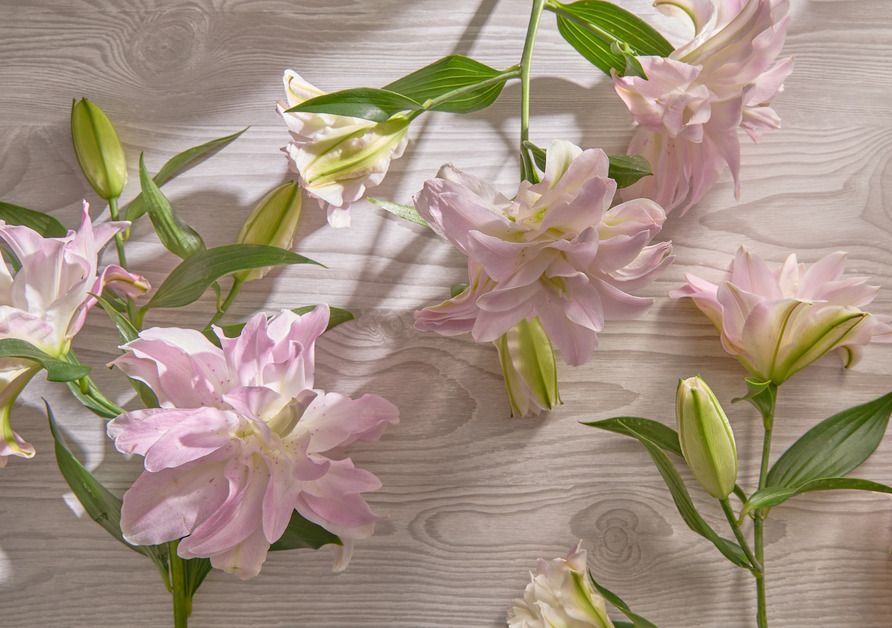Everything you need to know about lilies


Where are lilies commonly grown?
The lily is native to the Northern Hemisphere and you’ll find it’s more than 100 varieties growing across Asia, Northern America and Europe. They typically grow in temperate and tropical climates.What is the meaning behind gifting lilies?
Lilies are bursting with symbolism. This elegant bloom is considered an emblem of purity, innocence, femininity and fertility, with its sweet shape and pastel hues giving its association with renewal and rebirth. Conversely, the lily is a popular funeral flower and is often included in sympathy bouquets.The most popular lily varieties
There are so many different types of lily, and they all enjoy different seasons, with some lilies blooming from early to late Summer and others appearing at the beginning of Autumn, allowing us to marvel at their beauty for much of the year. Here are some of the most popular lily varieties.Oriental lilies are perhaps the most recognisable type of lily flower, with large, fragrant petals that typically bloom in shades of white, pink and red. If you’re seeking cut lilies, oriental lilies are the variety you’ll most likely find in floristries. They usually bloom in late Summer.
Asiatic lilies are the rainbow of the lily world, offering the most variety of colours. These showy blooms will blossom in early Summer, looking resplendent in shades of pink, orange, yellow, red, cream, white and lavender, and often featuring characterful marks and spots on their petals. Unlike oriental lilies, this type isn’t fragrant.
True to their name, tiger lilies are vibrant orange with striking black or crimson markings. Their sword-shaped petals curve backwards towards the stem, creating an unusual, bulb-like silhouette. They are in season in mid-to-late Summer.
The curvaceous petals of this pretty variety curl backwards, creating the trumpet-style silhouette that it’s named for. These sweet-scented flowers bloom in July and August and come in shades of pink, purple, orange, red, yellow and white.
As their name suggests, Easter lilies have become a popular flower for Easter celebrations, favoured for their connotations of purity, rebirth, new beginnings and hope. They’re particularly popular in the US, where the majority of Easter lilies are grown. Though they have come to signify the start of Spring, their natural growing period is actually late Summer.
‘LA’ stands for ‘longiflorum asiaticum’, which indicates this hybrid bloom is a cross between an Easter lily (longiflorum) and an asiatic (asiaticum). They come in vibrant hues with large petals and a delicate fragrance.


How to keep lilies fresher for longer
Once cut, lilies can last up to 14 days in a vase. With the correct care and attention, you can help to extend the life of your lilies for as long as possible. If you’re wondering how to care for cut lilies, simply follow these steps.1. Using sharp secateurs, trim the stems of your lilies at a 45-degree angle, snipping off at least one inch (you may want to measure the stems against your vase to achieve the appropriate height). This will help them to drink the water more easily.
2. Our best lily care tip is to gently remove the anthers that contain pollen. While pollen is integral to lily’s growth, they no longer serve a purpose once cut and can actually reduce the lifespan of your lily, as the pollen can damage the petals if they come into contact. Gently pluck the anthers out, making sure to avoid touching the petals in the process.
3. Remove any leaves that may come into contact with the water, as this will help to reduce the build-up of bacteria.
4. Clean your chosen vase and place your stems into clean, fresh water, adding any flower food your stems may have arrived with. Change the water every couple of days to keep it fresh.
5. Place your vase in a cool, shady environment away from direct sunlight and draughts.
6. If some of your lilies start dropping petals, remove the decaying stems and leaves to help revive the rest of your arrangement.
What should you do if your lilies aren't opening?
If your stems aren’t opening, you can speed up the process by relocating them to a warmer, humid environment.Are lilies pet friendly?
Sadly, lilies are toxic to pets if ingested. They are particularly toxic for cats and should be avoided in homes with feline friends. If you’re looking for pet-friendly alternatives, why not explore our range of pet-safe blooms?Do lilies stain?
Yes, lily pollen can stain fabrics and surfaces. Remove the anthers when you receive your lilies to reduce the risk of staining. If the pollen does create a stain, avoid dabbing at it with a wet cloth, as this can worsen the effect. If the pollen is on fabric, shake it to try and get the worst of it off. For hard surfaces, use sticky tape or a vacuum to try and remove the pollen.Alternatives to lilies
If you can’t find the lilies you’re looking for, why not consider a lookalike flower? Alstroemeria are often mistaken for miniature versions of lilies, as their petite petals mirror the star shape that lilies are so known for. Amaryllis are also very similar in shape, bringing the vibrancy and exuberance of lilies in bright and beautiful hues.If you have your heart set on lilies, we can appreciate why – they’re a wonderful bouquet to receive and make for a welcome gift. Explore our collection, or browse our luxury or letterbox blooms for more floral inspiration.